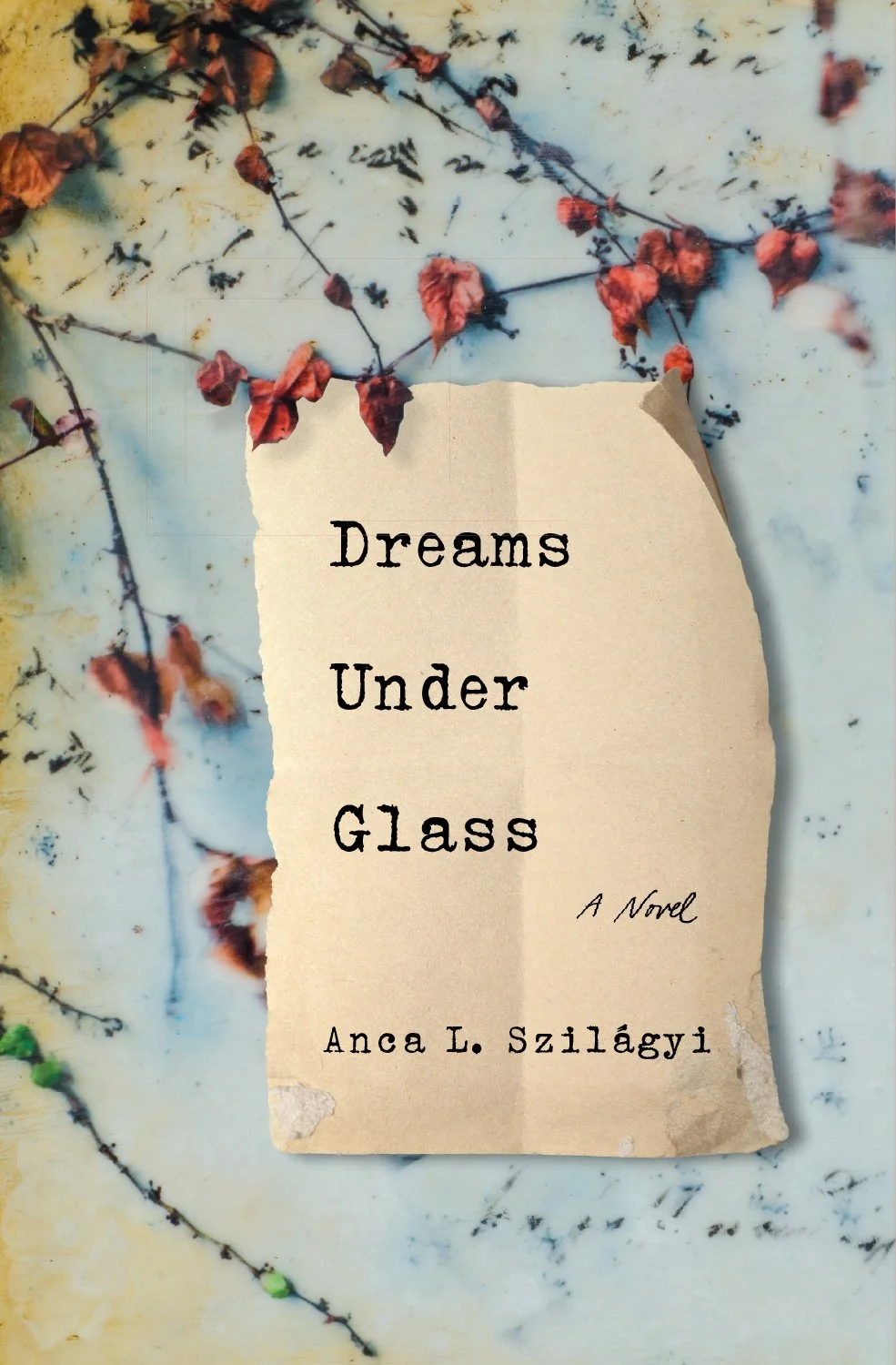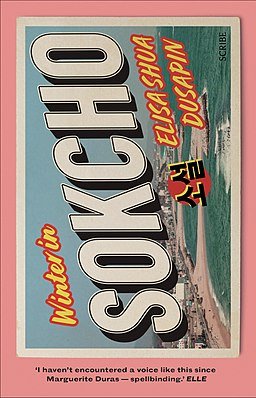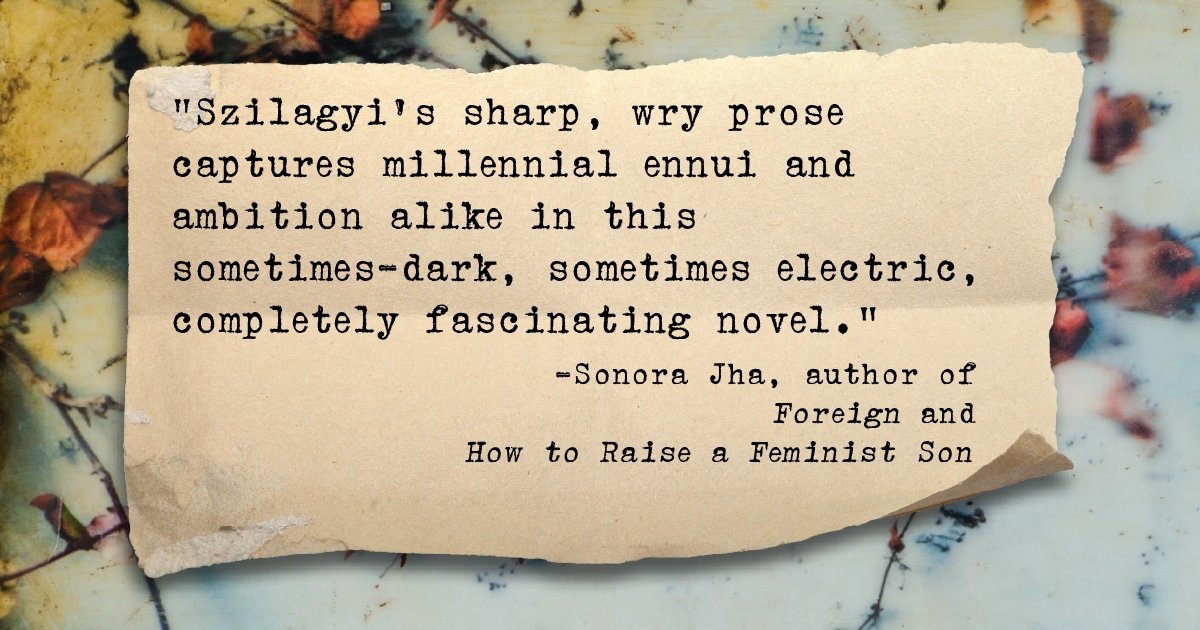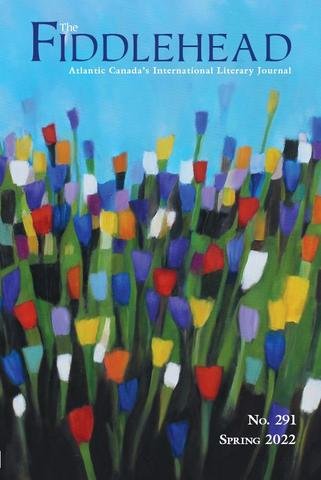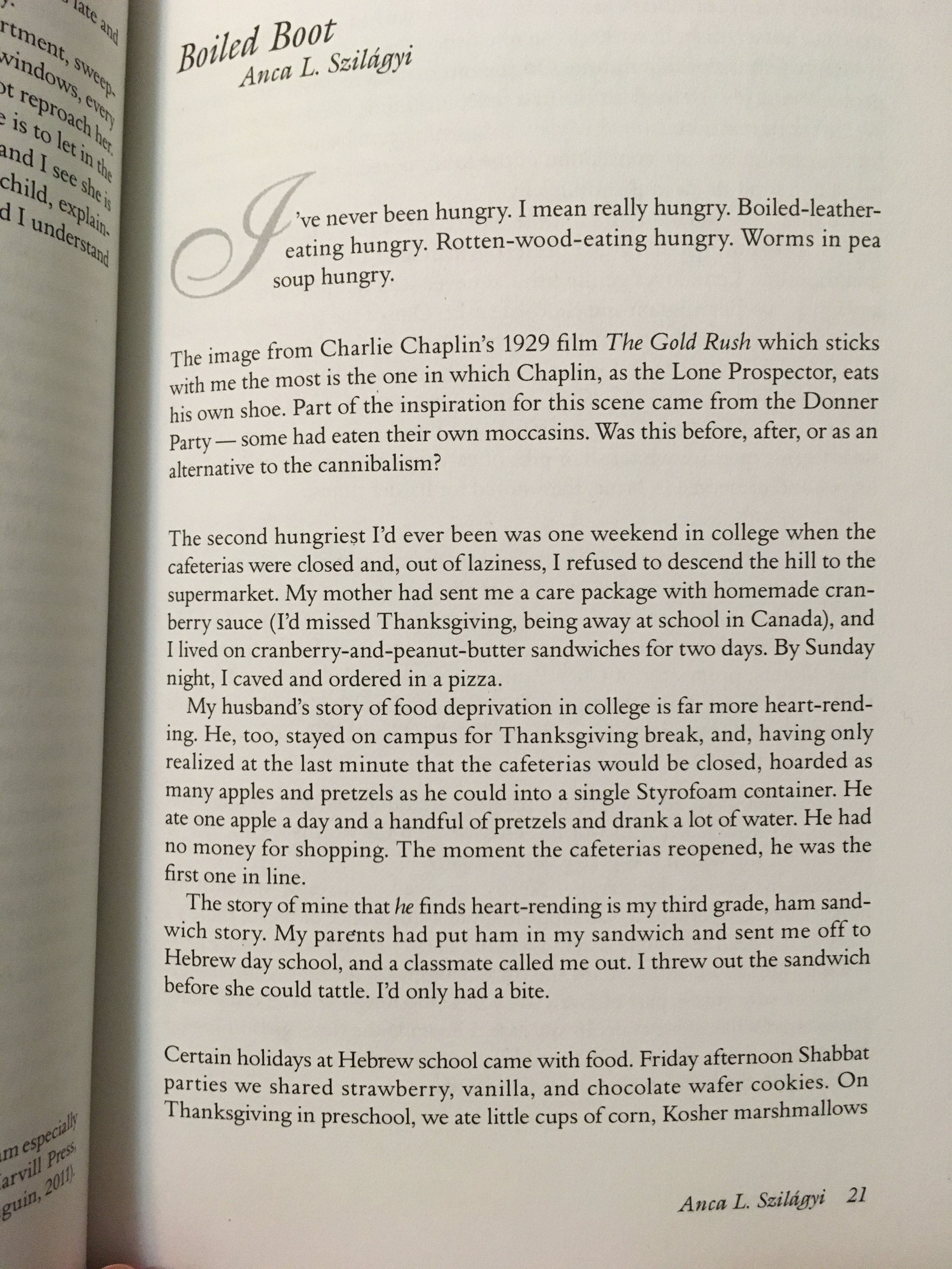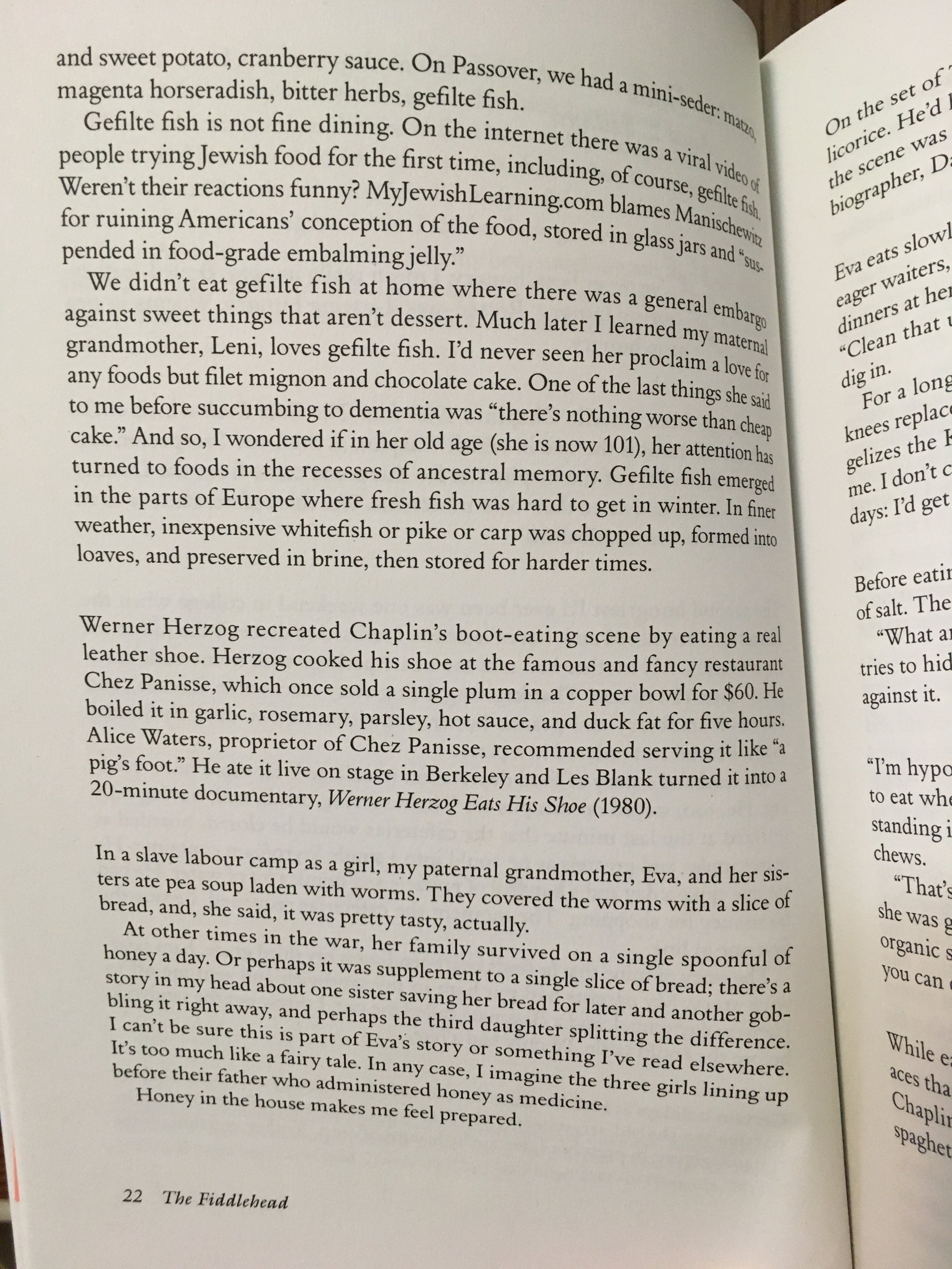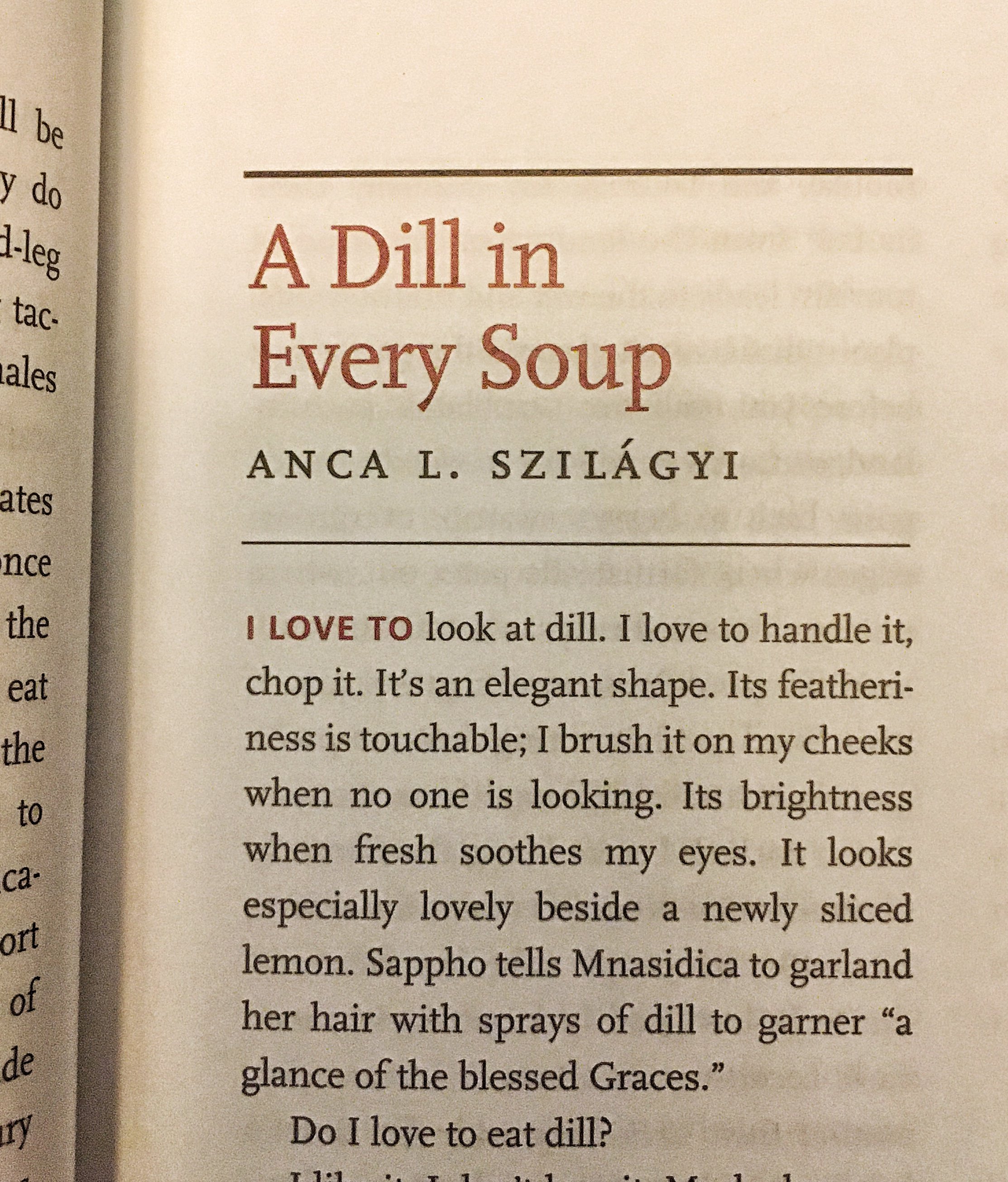I’m thrilled to share that the audiobook for Dreams Under Glass will release Fall 2024, and you’ll be able to purchase a copy through all major platforms or borrow one through your public library. Sound was a very important part of the composition of this book, both because I wanted it to sound “New York-y” in a way that felt homey to me and because I worked on it as a Jack Straw Writing Fellow in 2015, a program that trains writers for performance and voice recording. (You’ll see via the Jack Straw link that back then the work-in-progress was simply titled Paralegal. Titles are hard!) I am not the narrator of this audiobook—a professional narrator is—and I can’t wait to listen to their interpretation of my novel. Huzzah!
Happy first book birthday to my second book baby, Dreams Under Glass! I am so grateful for the love this book has received from readers, bookstores, and book reviewers. Thank you for buying, reading, reviewing, suggesting your library obtain a copy--it means so much to me!
Thank you to the fantastic independent bookstores carrying my second book baby on their shelves:
In Chicago: Exile in Bookville, Women & Children First Bookstore, RoscoeBooks, & The Understudy Coffee and Books.
In Seattle: Elliott Bay Book Company, Third Place Books, & Queen Anne Book Company.
Of course, thank you to my fantastic publisher, Lanternfish Press! You are all such a joy! More exciting news to come... In the meantime, some highlights from the past year in the pictures below.




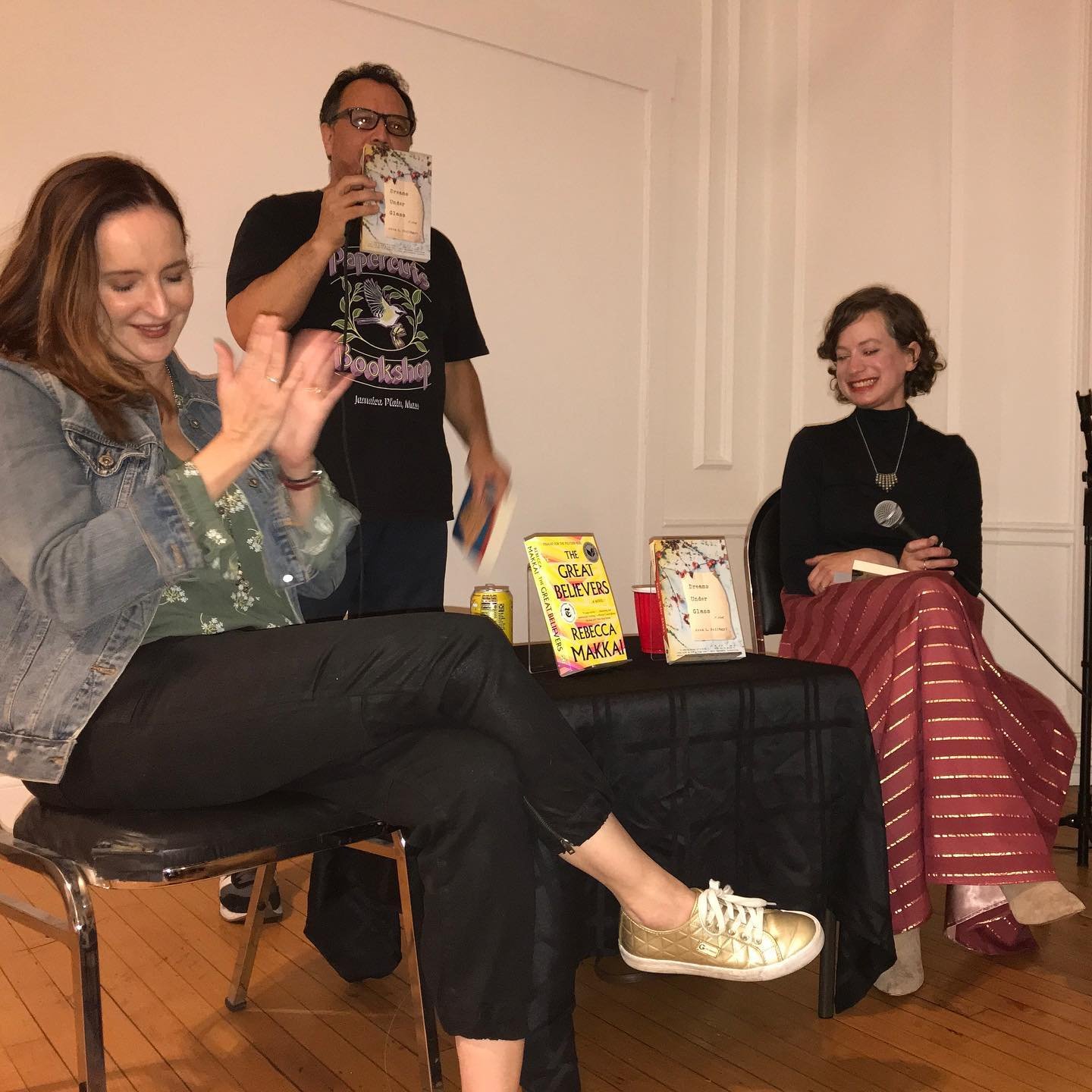

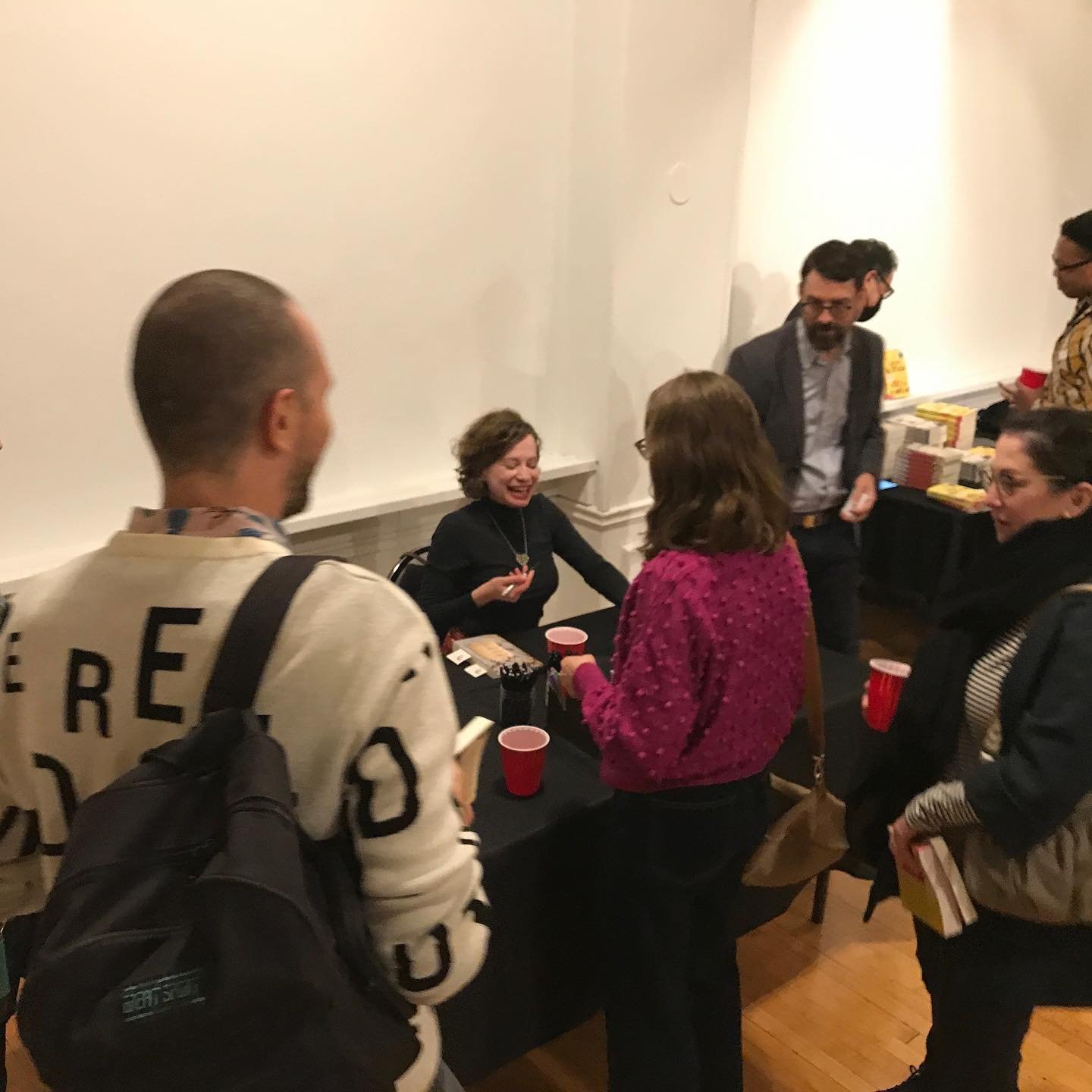
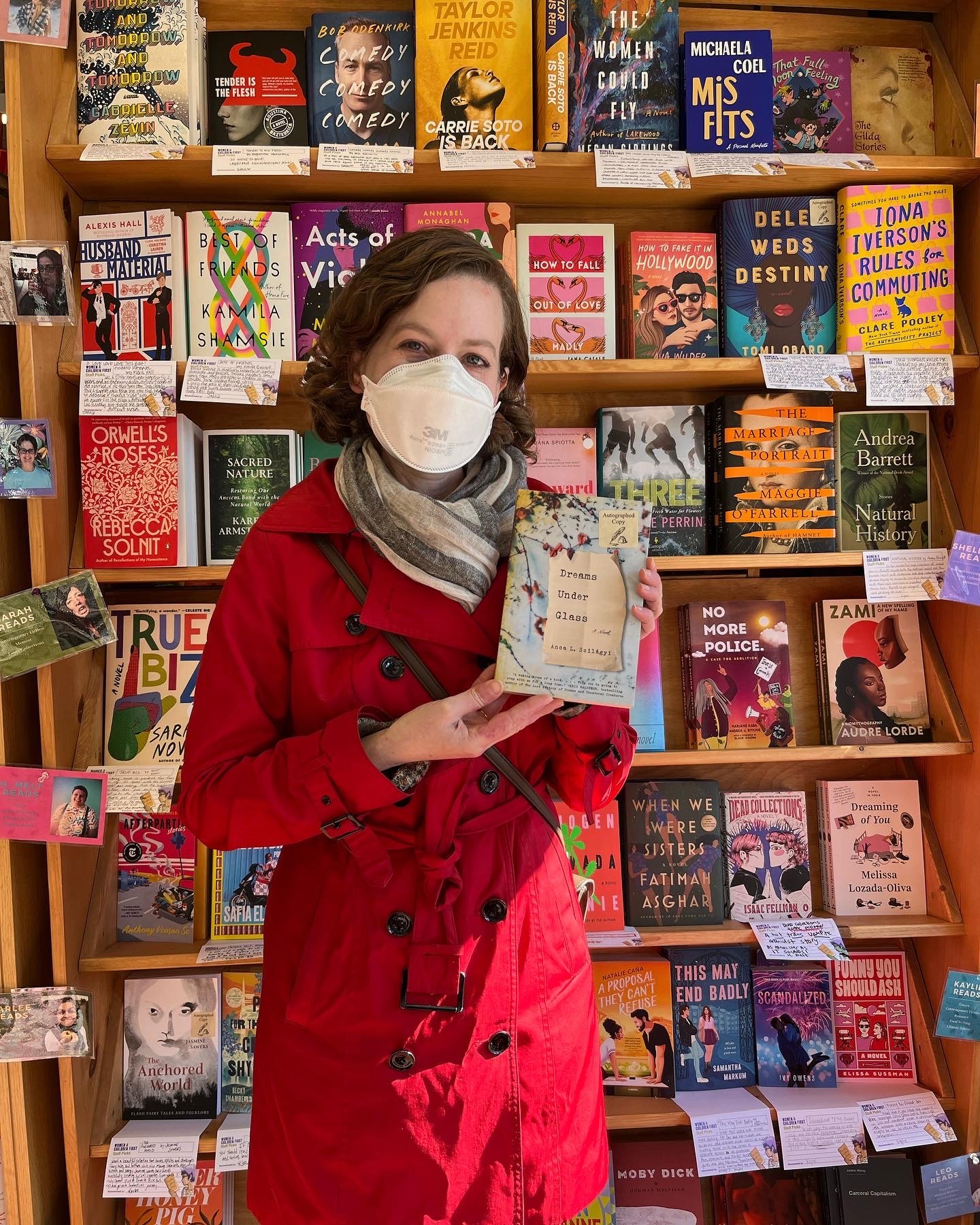

I’m so delighted to see Dreams Under Glass included in this Buzzfeed Books list by Wendy J. Fox, “17 Recent And Upcoming Books From Indie Publishers You Need To Read,” among so many great books. Fox writes:
Dreams Under Glass captures both the struggle between art and economic stability and the deeply precarious nature of simply staying alive. A novel for our modern times.
See the whole list here.
In 2012, two days after I thought what would become Daughters of the Air was finished, I started writing what would become Dreams Under Glass. Ten+ years and many drafts later, it is out in the world! Thank you so much to those of you who pre-ordered the book. If you'd like to help me get the word out, here are some things you can do:
Join me at the launch party at Exile in Bookville in downtown Chicago on Thursday at 7 pm. I’ll be in conversation with Rebecca Makkai! RSVP here for this free event. Or join me at one of my upcoming events around the country. Bring friends!
Buy the book at an independent bookstore to show booksellers enthusiasm for the book and support all the great work booksellers do.
Review the book on Goodreads, Powell’s, Amazon (you can review without purchasing there), Storygraph, LibraryThing, your personal blog or wherever reviews are shared.
Request your library purchase a copy.
Suggest it to your book club. I will be happy to join a discussion over Zoom if you would enjoy that!
Tell friends who read literary fiction, like a bit of dark humor, like Joseph Cornell or other surreal artists, stories set in New York City, or about struggling artists, or are interested in stories of the financial crisis of 2008 or the Bernie Madoff scandal.
Let me know if you'd like me to read at your reading series or come talk to your students or would like to adopt the book for a course.
Send me photos of you with the book and I will post it on Instagram! Or tag me, and I will happily repost. Tag the bookstore where you bought the book too!
Of course, these are all good things to do for any and all books out in the world that you wish to support. Thank you so much for championing literature!
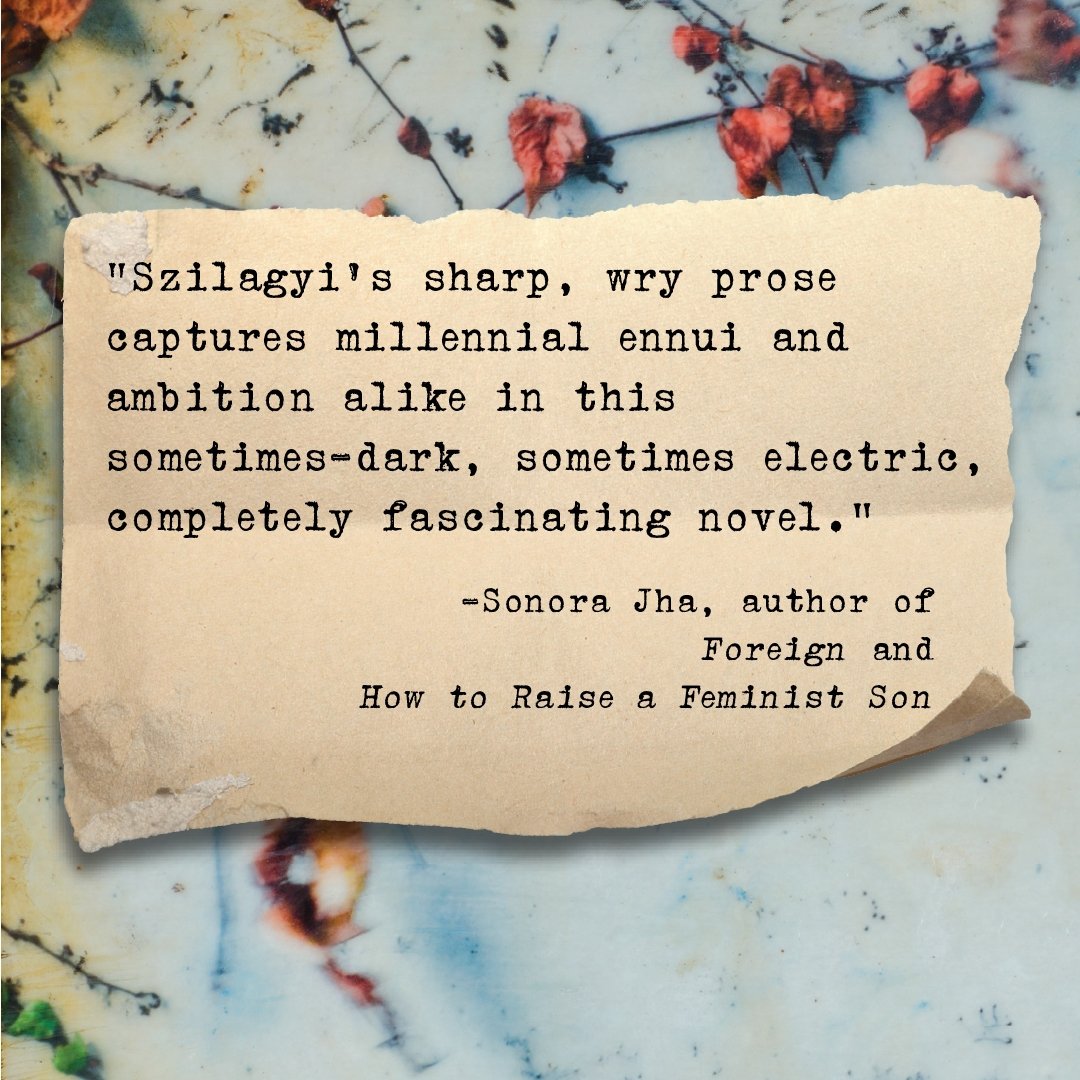
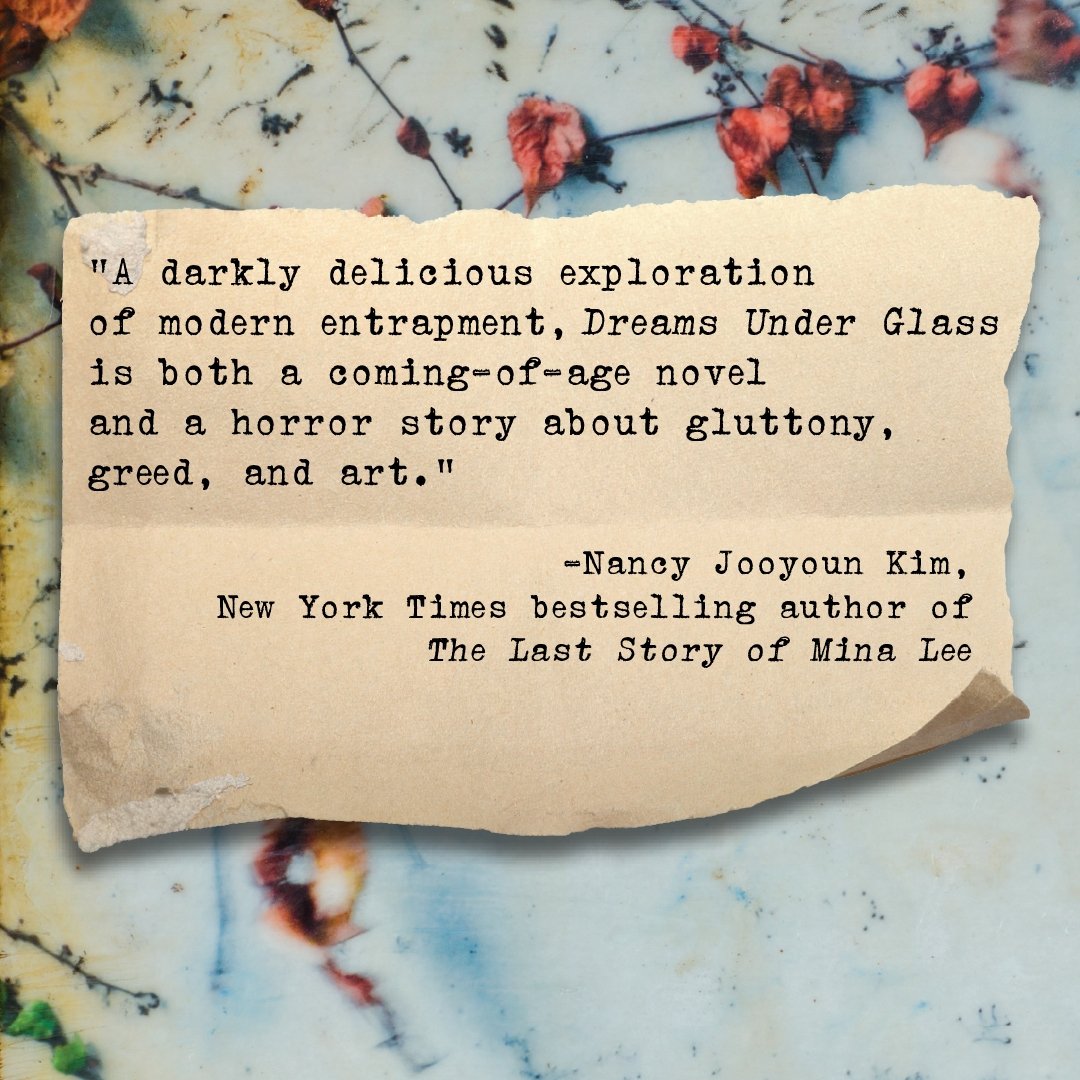

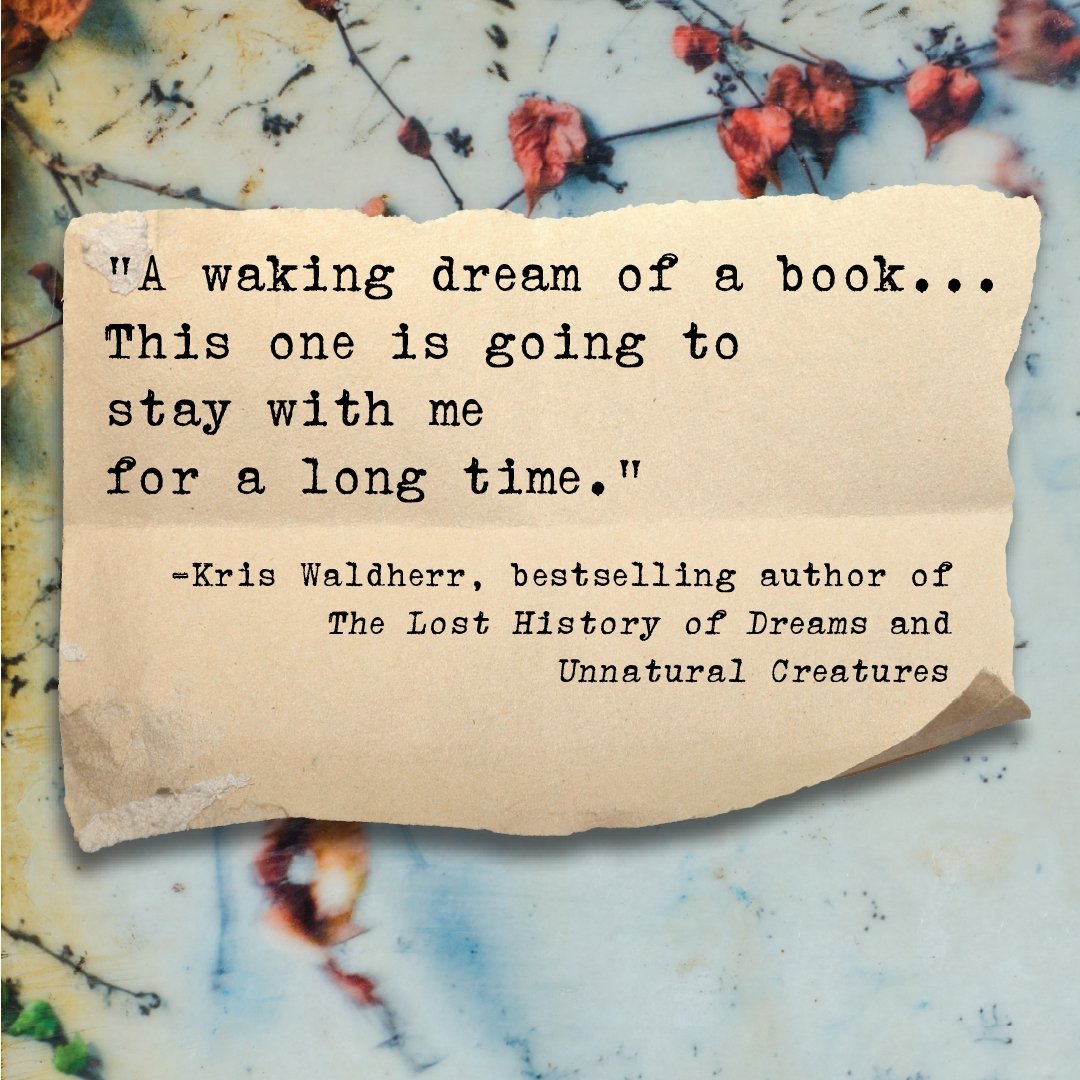
For my second Women in Translation Month post of 2022, I’d like to tell you about Winter in Sochko (Open Letter Books, 2021), which I devoured in May on the flight home for my grandmother’s funeral and back, the first novel I have been able to devour since becoming a parent in January 2021. Its spareness, and its tense family relationships in relation to food, reminds me of another favorite work in translation, Lise Tremblay’s Mile End (trans. Gail Scott, Talon Books, 2002), though here the anger is more subdued and there’s no psychosis. The comparison to Marguerite Duras on the cover also feels apt. The writing is quite fluid and poetic. In fact, perhaps because of its fluidity, I read it too fast to truly appreciate the lyricism.
Oozing winter and fish, Sokcho waited.
Here is a characterization of Sokcho, the resort town on the border of South and North Korea. The protagonist is a young French-Korean woman working in a hotel, relieved to not be living with her mother anymore, who stuffs her with food and comments on her appearance and suffocates her each weekend visit. It’s the off-season, windy and raw; few guests are in the shabby hotel: a woman recovering from plastic surgery and, just arrived, a French graphic novelist who asks the narrator to show her around town. She has a boyfriend, an aspiring model, but surprise-surprise, it’s an unsatisfying relationship and the graphic novelist, an older man, holds a certain amount of intrigue. While she cooks for him she thinks:
Beef and raw fish smells were wafting together, heavy and pungent. I pictured Kerrand at his desk. Lips pursed, hand drifting through the air before landing at exactly the right spot on the paper. I always had the finished dish in mind when I cooked. Appearance, taste, nutritional balance. When he drew, he gave the impression of thinking only of the movements he made with his wrist and hand, that was how the image seemed to take life, with no prior conception.
An image taking to life with no prior conception: this seems to bring together for me the themes of identity in this book, of how to forge one’s identity through creative acts and how to try to live comfortably within one’s own skin. The many accolades this book has received comes as no surprise!
I am so excited to share that you can now pre-order my second novel Dreams Under Glass. Pre-orders through Lanternfish Press will include a signed book plate; they’re also offering a bundle of both of my novels for $32. I would be thrilled, also, if you supported your local independent bookstore! Two lovely independent bookstores where I have events planned so far: Exile in Bookville in Chicago, where I will launch on September 29 in conversation with Rebecca Makkai, and Elliott Bay Book Company in Seattle, where I will be in conversation with Maya Sonenberg on November 3. If you’d like to stay in the loop about other events, you can sign up for my monthly newsletter here.
My essay "Boiled Boot" appears in the spring issue of The Fiddlehead. The essay explores intergenerational trauma, Charlie Chaplin's film The Gold Rush, the documentary "Werner Herzog Eats His Shoe," and more. Here are the first two pages:
You can order a copy of the issue here. Many thanks to Creative Nonfiction Editor Rowan McCandless and everyone at The Fiddlehead!
As with past AWPs, I found yesterday that I could really only digest two panels per day. I attended three, but the third panel was somewhat lost on me, unfortunately. This morning, I took in another informative session, however!
Behind the Curtain: An Insider's Look at Four Top Literary Journals
Panelists: Carolyn Kuebler, Oscar Villalon, Patrick Ryan, Julia Brown; Moderator: Matthew Landsburgh
I've been interested in the ins-and-outs of literary magazines (mostly as a writer and reader but occasionally as an editor) for a long time now, so I could not resist this panel.
Landsburgh asked each panelist to provide an overview of their journal, speak to the kinds of work they publish in print and online, speak to their process of selecting work, and also what is an easy rejection versus what catches their attention for potential publication.
Brown, a fiction editor at AGNI, based at Boston University, said that next year will be 50th anniversary of the journal. They publish 250 pages of fiction, nonfiction, poetry, and art twice a year, and AGNI 94 includes a Future of Translation portfolio representing 21 languages. They publish a similar variety of things on their blog but also do Q & As, more reviews, and graphic novel excerpts. They receive an astounding 21,000 submissions a year across genres, around 8,000 of which are for fiction, so are constantly reading and passing around submissions that are whittled down to 6-8 stories per issue. Brown likes to read one third of a piece; within the first few pages, she says, "you can tell if it is something you want to pass on to others or not." But also: “sometimes there’s a story like a thorn that isn’t to your taste but there’s something about it that makes you want to pass it on." Brown loves when she is being led through a story and the sentences are like bread crumbs--it feels exciting and dangerous. When there’s a honed sensibility in the language, “it’s evident from sentence one”
Villalon is the managing editor at ZZYZYVA, a San Francisco-based journal with no institutional affiliation, publishing poetry, fiction, nonfiction, interviews, and art three times per year. In addition to online classes, they do 27 events per year, which include festivals, conferences, and interviews at bookstores with contributors who have a new book, which sounds like a really nice way to build community. Villalon also noted that online publication is paid the same as print. They do not take online submissions, however, and they do not use readers— interns log submissions and do a first read mostly for their own benefit, making a maybe/maybe not pile but it’s for them to learn about common mistakes and what works well in a submission. Editors look at everything. Submissions with cliches and clunky sentences are a quick rejection. They are looking for a believable voice, conviction, something that sounds true, that it’s not a writing exercise or thought experiment but something meaningful.
Ryan, the editor in chief of One Story, also a magazine with no affiliation, said that next year is their 20th anniversary. They publish one short story per month in chapbook format have published 284 different writers so far, half of which it is their first publication. They receive 10-12,000 submissions per year, close 2 months a year to catch up. A volunteer team of 12-15 vetted, trained readers commit to reading 15 complete submissions per week and they must submit a “best” submission of the week (I love this requirement); an assistant editor reads the best ofs, then sends them to Ryan, who starts all of them and they work together to winnow down what to read next. Red flags include confusion and obscurity, a mistake made by a lot of emerging writers; no sense of urgency by page two, no sense that the story is going anywhere. But if a colleague says to read it, he reads the whole submission.
Kuebler, the editor of New England Review, which is based at Middlebury College, noted that they publish short short fiction to novellas, poetry, essays (critical, personal, lyric, travel), dramatic writing, and translations in all genres, but they do not publish reviews or art. Occasionally they do an emerging writers issue (e.g. writers who have not yet published a book). They have a podcast in which theater students at Middlebury perform published work which sounds lovely! A volunteer team of 20 readers (some recent grads, some retirees) read 10,000 submissions a year. The editors get to know the readers well before the readers can be quite brief in their comments on Submittable, where much of the conversation takes place. The editors will read the readers' comments and the submissions and then decide whether to advance story to Kuebler who “is the keeper of the big picture” in terms of what’s been published recently and what will be in future issues. She loves to get a submission where she wonders “how’s this going to work?” yet the piece feels authoritative.
The panel ended with the all-too-important urging of writers to subscribe to one or two journals. If every writer did this, it would create significant support for the literary ecosystem. So please do so if you don't! Happy subscribing, reading, and submitting!
When AWP announced their 2022 conference would be in Philadelphia, I was super excited to go and hang out with my publisher Lanternfish Press in their hometown. During the pandemic, I became a mom, and I'd thought by now perhaps there would be a vaccine for the littlest humans, but as the conference approached it became clear that there would not be one in time. I decided to attend virtually instead. (Fingers crossed for an in-person return to AWP in Seattle in 2023!)
I like to choose a theme for each AWP to narrow down the many options. One year I focused on literary agents. Another year I focused on learning more about the literary magazines I wanted to submit short stories and essays to. This year, I am putting the finishing touches on my third novel, set in the Netherlands in the late medieval/early Renaissance period and in 2016, and I am trying to make progress on my collection of lyric food essays that blend research and memoir, so I am focusing on panels on historic fiction and creative nonfiction.
What follows are some notes from the virtual panels I attended. I hope you find them helpful!
Staying in Key: Recognizing & Avoiding the False Notes of Anachronism
Panelists: Janet Benton, Donna Hemans, Keenan Norris, Jennifer Steil; Moderator: Aimee Liu
Liu invited each author to read a brief excerpt of their work and discuss the challenges they faced writing particular times and places.
Benton read from Lilli De Jong, set in a 19th century alms house in Philadelphia, near a swamp. In this scene, a pressing question for her was: what is the condition of a baby close to death? Her Quaker protagonist meant attending to language, interaction, spiritual belief, and characters' views of the choices they are making in very particular ways. In this time period, Benton noted, Quakers "were not slavish to religion" and "were willing to buck convention," something she wanted to stay cognizant of. At a reading, an octogenarian Quaker asked Benton how she managed to capture the voice of her grandmother, which sounds like quite an accomplishment!
Stiel read from Exile Music, which tells the story of Jewish refugees from Vienna in Boliva in the 1940s. She chose a passage that required a lot of research: what did La Paz look like in the 1940s? How did the refugees communicate, socialize, get help from refugee organizations? What was the effect of altitude on the body? One strategy for writing this book was to make Viennese culture as clear as possible first to demonstrate the sense of loss and disorientation upon arrival in La Paz. As someone who moves to a different country every few years, she now makes sure to take extensive notes upon arrival in each new place, to maintain that perspective.
Liu's novel Glorious Boy is also set in World War II, but on India's Andaman Islands, off the coast of Burma. Researching this novel is what gave Liu the idea for this panel. One question she had as a writer: what is it like to move through a forest that’s never been penetrated and you’re on a spy mission where you can’t leave a trace? The area was used as a penal colony by the British so there were also people from all over India, therefore making it quite a multicultural place. One strategy Liu used was to choose an American protagonist to help avoid anachronisms; she makes mistakes because she is American and then Liu as the author can make those mistakes clear to American readers.
Hemans's novel Tea by the Sea flashes forward to 2010, in Jamaica, where Plum, a young woman born in New York, is in search of the daughter that was taken away from her. As a Jamaican-born author, Hemans had to take care to consider how Plum would see Jamaica. She also needed to take care to depict the landscape of 2010 and not the one she grew up with; for example, a plant disease has ravaged many a coconut farm and there are less cane fields and orange groves than Hemans saw growing up. Hemans also talked about imbuing the landscape of Brooklyn upon Plum's return with a sense of loss.
Norris's novel The Confession of Copeland Cane is set in Oakland from 2020-2030. An important challenge was the need for "fidelity to present tense conditions while looking forward to the future.” For example, COVID emptied out San Francisco in the short term and he had to speculate how that might reverberate over the decade. A special challenge was that he began writing this novel in 2015. Liu remarked that his novel, published in 2021, was the first that showed people grappling with masks. He said, "The desperation of having to rethink my book was a great lesson in the creative risk of writing a book.”
What’s Form Got to Do with It: Finding Shape in Memoir Projects
Panelists: Tyrese Colman, Krys Malcom Belc, Marcos Gonsalez; Moderator: Sarah Fawn Montgomery
I came to this panel thinking about my essay collection but I came out of it also thinking about my one-day memoir of living with a rare chronic illness and choosing to grow my family through adoption.
Tyrese Coleman read from How to Sit, a memoir that is not 100% nonfiction: "Memories are not facts…they contain their own truth regardless of how they’re documented." She recommended David Sedaris's Barrel Fever as an example of a work that mixes fiction and nonfiction in one volume, though the genres are clearly delineated, and Tim O'Brien's The Things They Carried and Sandra Cisneros's The House on Mango Street as examples of "memory writing." Her next book will mix historic fiction and memoir (exciting!) and as a memoirist who is not an academic or journalist she encourages others in the same position to provide context before feeling free to offer conclusions, e.g. don't feel obliged to be neutral in your own memoir.
Krys Malcom Belc's The Natural Mother of the Child is a memoir in essays that also includes speculative nonfiction, a genre I'd love to learn more about. As he was writing the book, he wondered: was this an essay collection that needed to be diversified or was this a memoir that needed more blending and cohesion? The book's central question: what does it mean to be a transmasculine person who has given birth? Each essay looks at this question but has its own aesthetic and level of research versus personal exploration. Belc spent a lot of time looking at pictures from childhood and legal documents, trying to understand his passage through time, and offers these materials to readers— it’s a visual book. Regarding the question of what research to include and what to exclude, he noted that editors can help point out where there is too much research--the stuff you’re nerding out on that an audience beyond you would not be so interested in.
Marcos Gonsalez wished that before he wrote Pedro’s Theory he'd asked himself “What is the narrative I want the reader to leave with? What are they moments?” The pre-writing process, he advised, should put key moments under a microscope and incorporate the perspectives of others even if it don't align with your own. He also urged the audience to consider: how can you make research reader-friendly and reader-inviting and integrate it into the fabric of the story? How do we include literary criticism or historiography, for example, while still inviting the reader in? Two inviting examples: Jenn Shapland's My Autobiography of Carson McCullers and Kate Zambreno’s Heroines. Of course you need to think about your audience when you consider this question. A final important consideration: what painful moments do you want to share with readers and what meaningful moments do you want to share on your own terms, without feeling overexposed?
Sarah Fawn Montgomery spoke to resisting the traditional narrative arc of memoirs of mental illness. She urged the audience: "don't revise your life." She said, "Flirting with the truth" helped her "stay true to madness" in her first memoir Quite Mad: An American Pharma Memoir. Her intended audience was her family, which did not go to the doctor, so she took medical language and research to show how doctors were overly sedating women or categorizing normal emotions as madness. Her forthcoming lyric memoir, Halfway from Home, blends Montaigneian essays with hermit crab essays and research in “the psychology of mirror and 19th century oil painting and the science of nostalgia" among other super intriguing topics!
That's all for today; hopefully I'll be back tomorrow with more tidbits. If you're attending AWP in person or virtually, what are some pieces of advice you're gleaning that you're finding helpful?
January is almost over. Is it too late for a blog post on setting intentions? I would venture not! The pandemic and being a new parent (do I still get to say "new" now that my child is one?) is a constant reminder to be gentle with myself and find the right level of ambitious that I find fulfilling without giving myself a migraine.
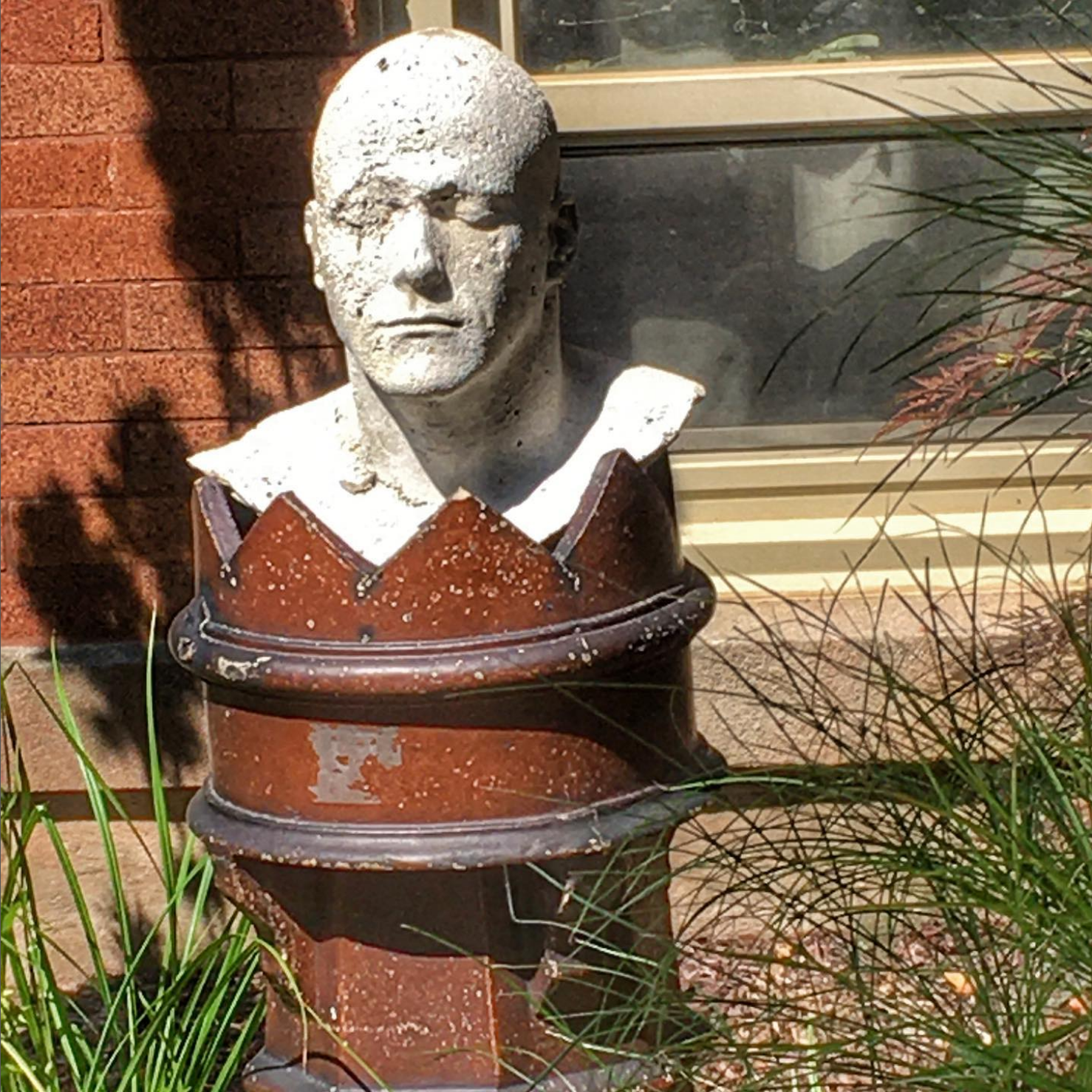
So what are my writing and publishing goals for this year? With my second novel releasing from Lanternfish Press in late September, I have to be mindful of the marketing and publicity work just around the corner. I learned with my first novel, Daughters of the Air, that marketing and publicity can be ::e n d l e s s:: I do like it! But I also need to keep space for work-work, creative writing, and life.
I started writing my second novel two days after I began submitting my first novel—with a haiku workshop as a palate cleanser in between. I started writing my third novel, my current work-in-progress, just a year after starting my second novel. It's a long story as to why that I won't get into here, but I was heartened to learn that Jess Walter juggles multiple book projects simultaneously, and I'm sure many other writers do as well. Welp! The big hope for this year is I "finish" that third novel. (NB: Here's my silly essay "How to Finish a Finish a Novel in Only 15 Years"; I love that this essay landed in The Nervous Breakdown.)
My other writing goal is write two more essays for the collection that I began the same year as Novel #3. I'm taking an essay writing class through Atlas Obscura, where I've been having a great time teaching fairy tale writing. It'll be my first time as a student since taking a wonderful Hugo House class in 2016 with Alexander Chee on making fictional characters of historic figures, and I'm really looking forward to it. My plan is to write one piece arising from the class and one essay after finishing reading A Harp in the Stars: An Anthology of Lyric Essays, which I have ordered from one of my favorite Chicago bookstores, Exile in Bookville, which is located in one of my favorite buildings in the city.
That's it for my writing. I think those are plenty of goals for the year, given what I've got on my plate. I stopped aiming for 100 rejections per year a few years ago, though I do think it's a good goal to have if you're starting the submissions process and need to develop a callous against rejection. By my calculations, I had a 17% acceptance rate in 2021 so I do need to aim a little higher as my general goal, per advice from Creative Capital, is 10%. But I'm not going to tear my hair out over this one. As I say to my son, "Gentle! Gentle!"
My last goal is to continue to help emerging writers stretch their craft and hone their approach to getting their work out in the world. If you have short stories or a novel you're working on and if you'd like to work one-on-one with me, you can check out my coaching and consulting page at Hugo House here.
What are your goals for 2022? Any special plans for writing, reading, publishing? Or maybe you want to learn to cook something special this year? My cooking is toddler-centric now, but I've been dipping in and out of Marcella Hazan's Essentials of Classic Italian Cooking. I love her opinions: "Powdered rosemary must be shunned." Onward & upward & twirling, twirling, twirling!
I can count on one hand how many publications I had this year, but it was a year full of tremendous personal highlights. Mainly: M. & I became parents in January! One day when I catch my breath I will write about that journey. There's a lot to say, and I need a lot of childcare to get it done. :)
In February, Capra Review published my short story "The Samoyed." Here's an excerpt I like:
In a large glass case beside a tapestry where the beast was hunted and speared, the horn of a narwhal gleamed. “To prove the existence of unicorns, men would drag back these tusks from poor old narwhals. The horn of a unicorn would have remarkable curative qualities, they claimed, for anything from rheumatism to insomnia to impotence.” Robert and Jane walked on into other rooms. The docent’s voice trailed behind them. “You could grind it up into a powder.” Jane imagined sprinkling narwhal horn powder atop her head, imagined coarse, white sand falling through a shaft of sunlight, an iridescent shower of skittering grains.
In June, Orion Magazine published my lyric essay "A Dill in Every Soup." Following the medieval theme of the prior excerpt, here's another excerpt I like:
“During the Middle Ages,” WebMD tells me, “people used dill to defend against witchcraft and enchantments.”
Finally, in November, Scablands Books, based in Spokane, put out their beautiful anthology Evergreen: Grim Tales & Verses from the Gloomy Northwest, edited by Sharma Shields and Maya Jewell Zeller. I have two short fairy tales in this volume. Why not pick up a copy from Spokane's Wishing Tree Books or Auntie's? Here's an excerpt from "Moss Child":
A lace of bright lichen crept up her arms, chin, cheeks. The green crept from her limbs up the sides of the thickened tree trunks, under so much soft moss that the echoes of footsteps and animal sounds grew muffled in the gulch.
Another very bright spot of the year was chatting with Karen Russell at Hugo House's Novel Nights. Here is Italo Calvino's essay "Lightness," which is a favorite of mine and which she brought up in conversation.
There's much to look forward to in 2022. Among other things, I am especially hoping there will be a COVID-19 vaccine for children under 5. In the meantime, I'm teaching a few virtual classes for Hugo House and Atlas Obscura, January-April, both over Zoom and in an asychronous format. Maybe I will make to AWP in Philadelphia in March? As that is Lanternfish Press's homebase, it would be sweet. Then in the fall Lanternfish Press will release my second novel. Huzzah! I also have a couple short publications in the pipeline, another lyric essay and a short story.
But before all that, I am turning back to revising my third novel and sinking deeper into Maggie O'Farrell's beautiful and absorbing novel Hamnet. Hope you have a safe, happy, and healthy holiday season!
I am delighted to have a pair of short fairy tales in Evergreen: Grim Tales & Verses from the Gloomy Northwest, out now from Scablands Books! This beautiful foil-stamped anthology, edited by Sharma Shields and Maya Jewell Zeller, features an incredible roster of Pacific Northwest authors, such as Gary Copeland Lilley, Rick Barot, Shawn Vestal, Tess Gallagher, Ruth Joffre, Nicola Griffith, Kate Lebo, Elissa Washuta, and Lucia Perillo, to name just a handful, and has some wonderful illustrations as well—you can preview a couple of them, including one from my story "Moss Child," here. You can pick up a copy directly from Scablands Books, or at Atticus, Auntie's, From Here, and Wishing Tree Books in Spokane. If you're based in the Pacific Northwest, your local library might like to know about it! Here is the "Suggest a Title" form for Seattle Public Library; many library systems have similar forms.
I'm delighted to share that my short story "Hinges," published in Gordon Square Review last November, was nominated for the Best of the Net. Many thanks to Prose Editor Nardine Taleb for the nomination! You can see the list of nominees here and check out their work here. Hooray!
I'm excited to have two fairy tales in Evergreen: Grim Tales & Verses from the Gloomy Northwest, a Scablands Books anthology edited by Spokane-based superheroes Sharma Shields and Maya Jewell Zeller. The (foil-stamped!) book releases November 2 (perfect season to cozy up with a book while it's drippy outside!), but discounted pre-orders are now available. Sharma shared a snippet of one of my tales on Twitter here. It's an honor to be in the same book with Elissa Washuta, Ruth Joffre, and so many other talented writers.
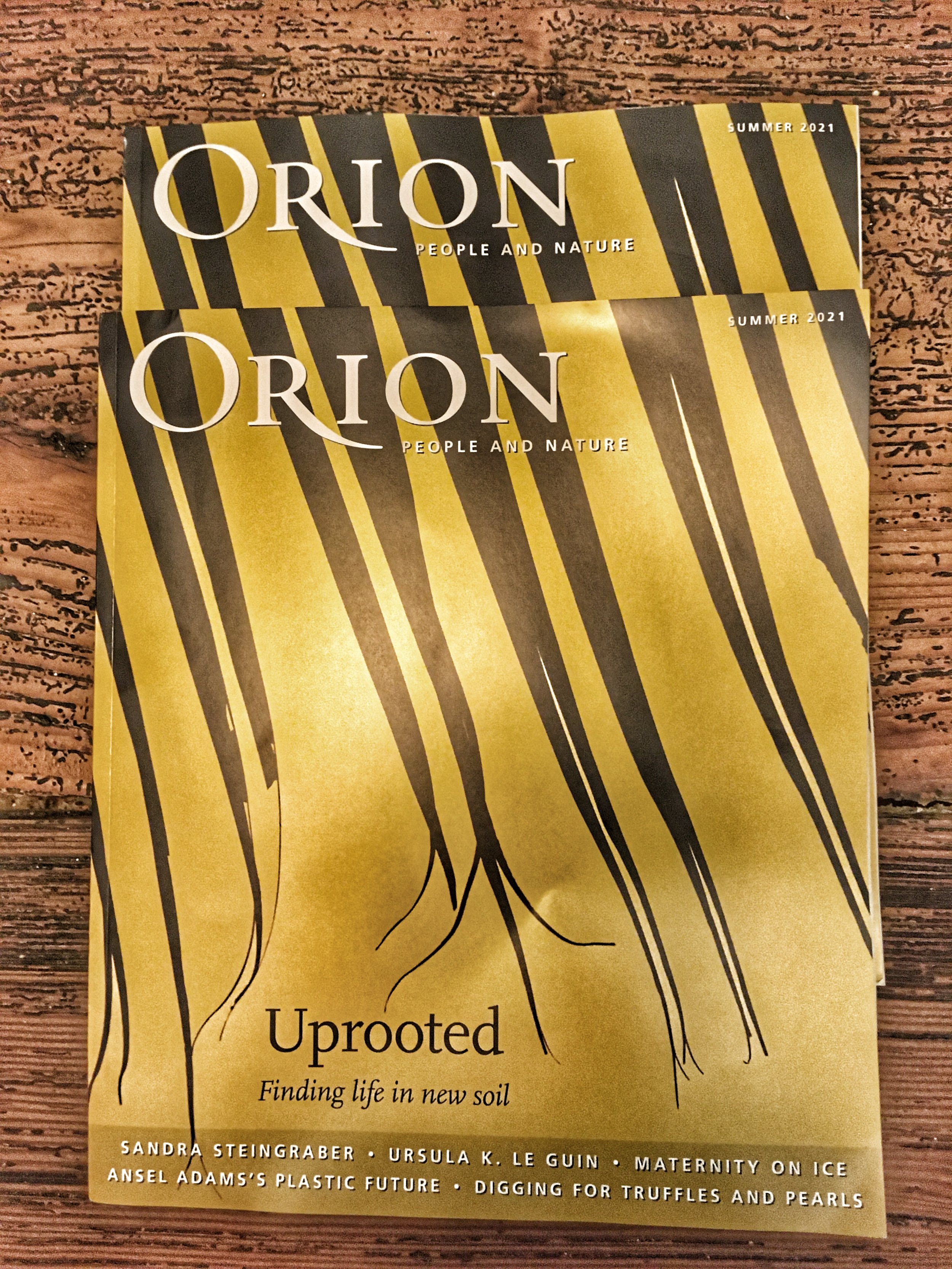
I'm happy to have a new lyric essay out in Orion Magazine's summer issue, "A Dill in Every Soup." The essay spans the personal, gastronomical, and ethnopharmacological, leaping from Sappho to the Talmud to Spenser's Faerie Queene, and more. Here's how the essay begins:
While we wait for issues to hit mailboxes and newsstands, and in honor of strawberry season, here is my first essay to be published in Orion, "Cosmic Fruit," from their Summer 2019 issue. Yum!
ETA: "A Dill in Every Soup" is now online, right over here!

Back in December, holding a bunch of dill.
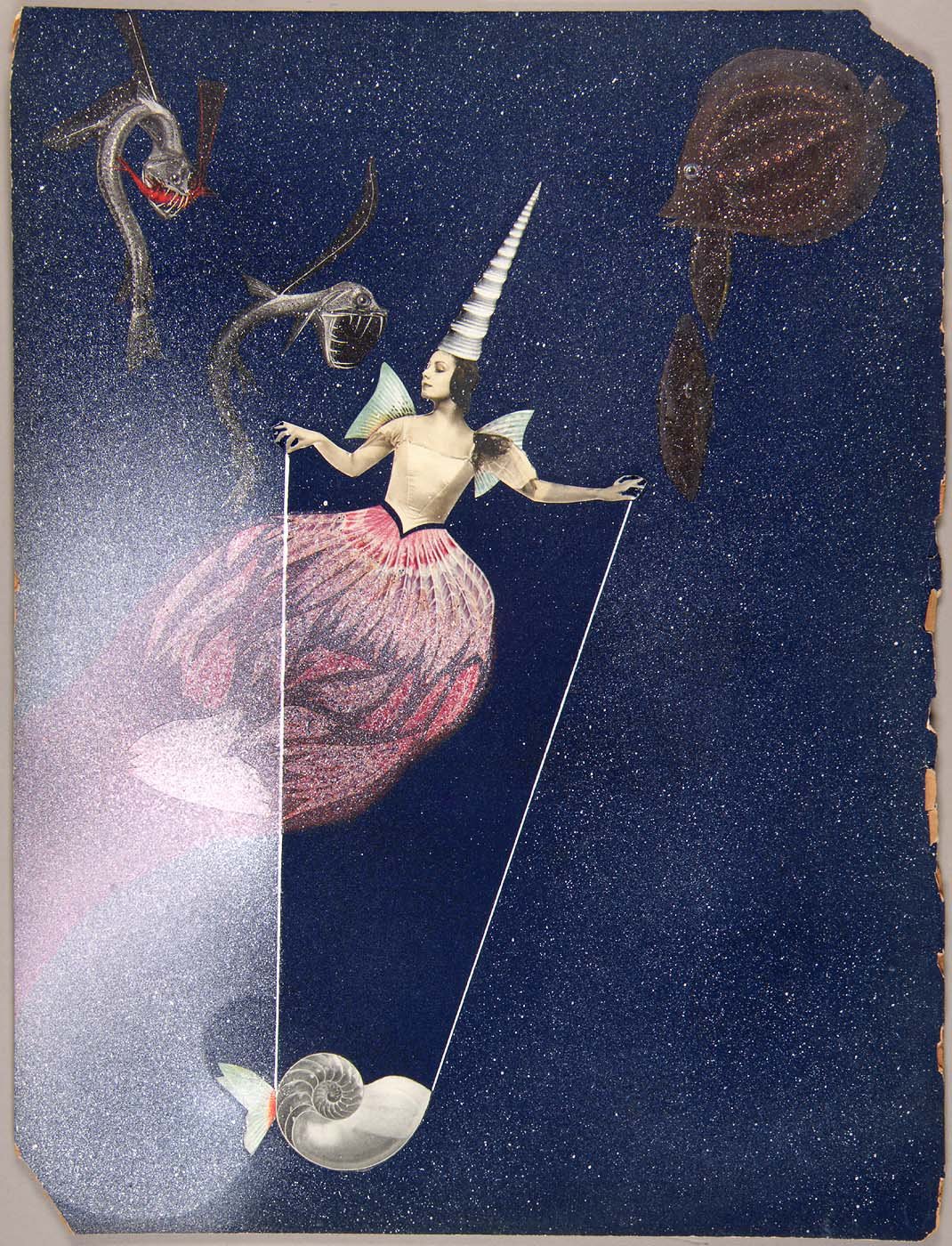
I am so very delighted to share that I've just signed a contract with Lanternfish Press for my second novel, to be published sometime in 2022. Some of you following this blog may be familiar with bits and bobs from the book, which for many years had the working title Paralegal, and which tells the story of a diorama artist working as a paralegal during the economic crisis of 2008, in the same building in which the Bernie Madoff scandal explodes. (Binnie, the protagonist, is influenced by the surrealist artist Joseph Cornell, hence the choice in art for this post. This particular collage also been my laptop wallpaper for ages...) The project received early support from 4Culture and the Jack Straw Writing Program, and it's so exciting to shepherd it on toward existence in the world!
ETA: Here is the official announcement from Lanternfish Press!
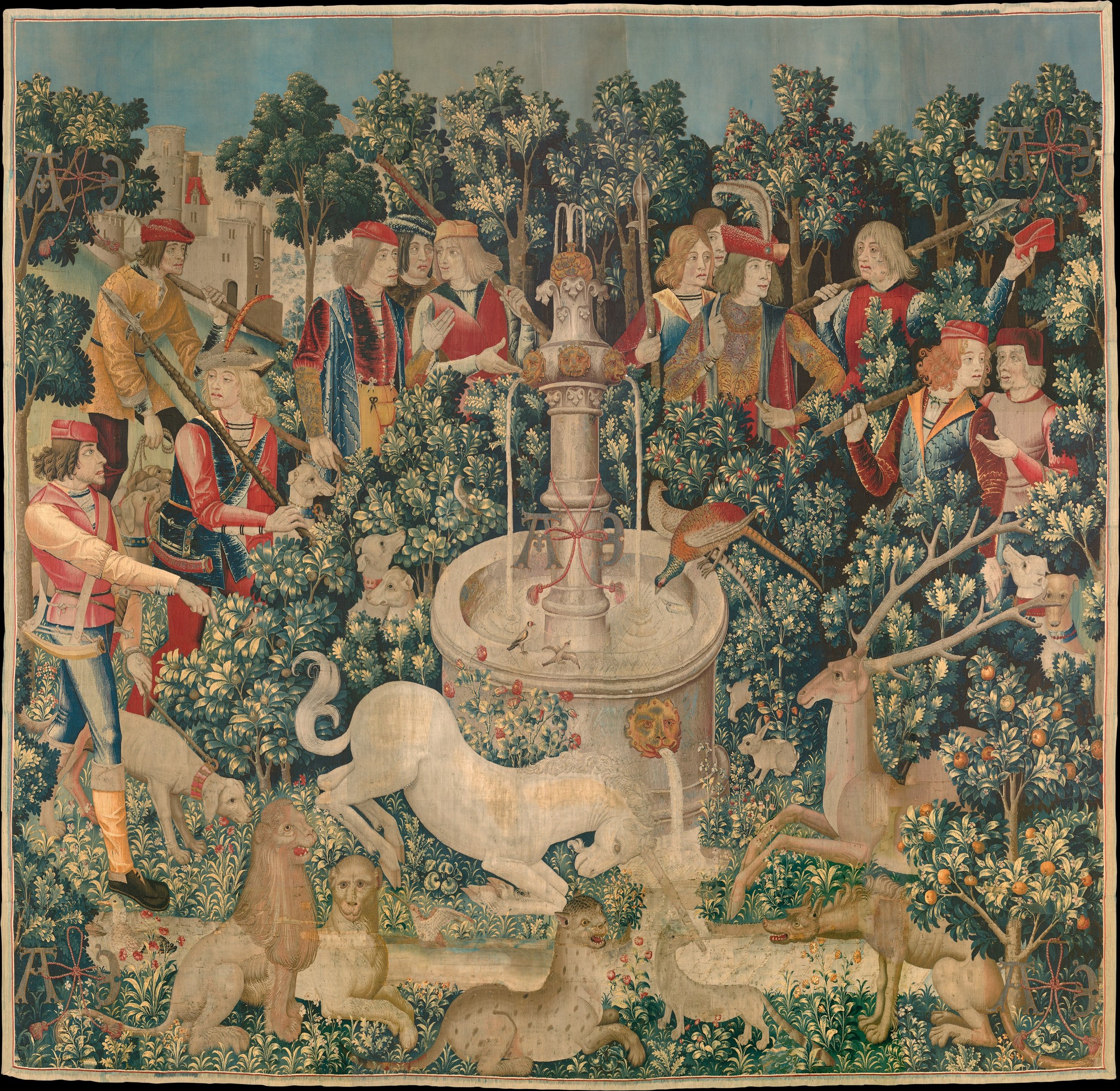
I'm happy to have new fiction in The Capra Review, and I love the art selected for the piece, The Unicorn Rests in a Garden, which is tangentially part of the story. (Just for fun, I chose a different unicorn piece for this blog post.) Other art mentioned in the story include Greco-Roman sculpture, Piet Mondrian's abstractions, and Martha Graham's choreography.
In a way, "The Samoyed" is a companion piece to my story "Old Boyfriends," which appeared in Propeller Magazine in December 2013. Both stories started out as structural "imitations" of Chekhov stories, "Old Boyfriends" using "Gusev" as a starting point and "The Samoyed" using "The Lady with the Dog," though I use the term imitation loosely. I wrote about that exercise here on my blog as well as for Ploughshares here. Anyway, here's how "The Samoyed" begins:
“Modern art is fine for decor,” he said, popping a vodka-soaked olive into his mouth. “But I don’t find it meaningful.” His lips were full, his eyes a gelid blue, his jaw-line well-defined with a stubble that seemed to Jane too calculated.
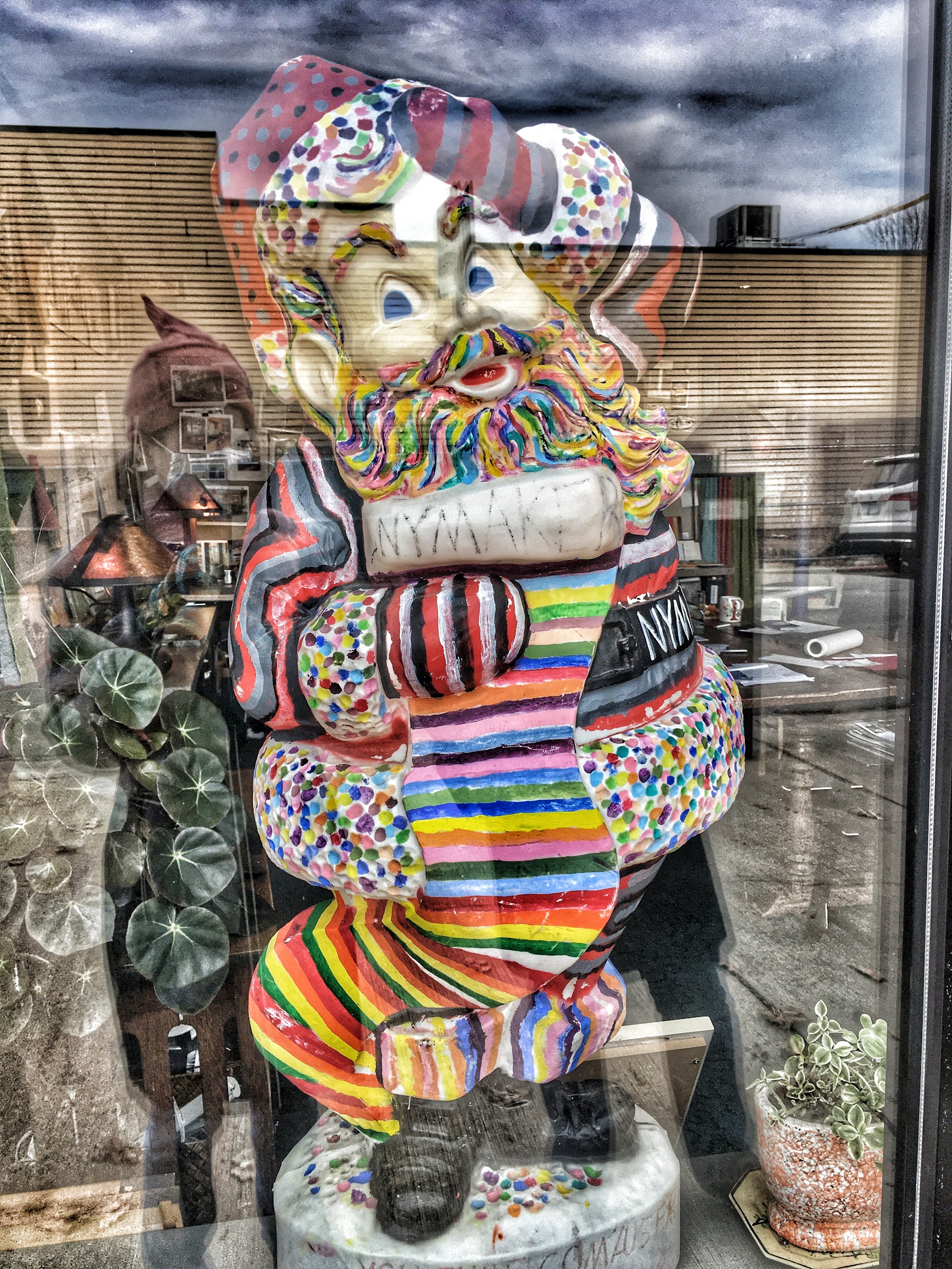
Back in December 2016, I remarked that world affairs were horrendous but that I would take a moment to celebrate some bright spots in my life. I'm not surprised that in the intervening years, I didn't write a similar end-of-year post, and I know we're not quite out of the dark yet, but I'm feeling hopeful for the future, nonetheless. Some reading, writing, and cooking highlights, forthwith!
According to my Goodreads Year in Books, the most popular book I read this year was War and Peace*, which in truth was a partial re-read during Yiyun Li and A Public Space's TolstoyTogether pandemic book club (which continues on as APSTogether). I first read War and Peace the summer between my first and second years at the University of Washington MFA program, as a way to counter my tendency toward sparse detail. It was quite pleasant to return to it this spring, but, alas, my reading life was too over-committed to stay the re-reading course with such a tome. The "least popular" book (for now!) I read won't actually be released until April 2021; please add my college friend Julian Mortimer Smith's wonderful collection The World of Dew and Other Stories to your to-read list!
Speaking of speculative short story collections by people named Julian, my one book review this year was of Julian K. Jarboe's Everyone On the Moon is Essential Personnel. I am sad The Seattle Review of Books went on hiatus, as it has been a wonderfully thoughtful venue for book reviews. My "Dispatch from a Pandemic" in Another Chicago Magazine might be another "highlight" from 2020 except for the whole pandemic part! At least I got to fall in love with the art of Belkis Ayón, profiled in my ACM piece. My last writing highlight of the year is my first short fiction published since 2018 (!), "Hinges" in Gordon Square Review. I had a lovely time at their virtual launch party getting to know a segment of the Cleveland literary community, which I wouldn't have been able to do under normal circumstances. This also gets me to closer to a side-goal I've had for several years, which I picked up from Seattle poet Susan Rich: get published in each of the 50 states. Still have quite a few states to go!
I am currently revising two novels, and between that, the pandemic, and writing 200+ "please vote" letters and postcards before the election, I think I'm going to cut myself some slack on "only" publishing three things this year. I think my biggest accomplishment, however, is learning how to make soup! I've made soup before. But it was always lacking the oomph my grandmother's boasted, even if I knew the secret ingredient in her chicken soup is beef. I've started collecting vegetable scraps in a big tub I keep in the freezer. And, at least once a month this spring and fall (not so much in the summer), I have had a cauldron bubbling, and my, what a comfort that has been.
My winter break plans? Chinese BBQ, baby bok choy, rainbow cookies shipped from Brooklyn (courtesy of my sweet MIL); Robert Altman's film Kansas City via our artsy cinema subscription, Metrograph; and, of course, the necessary trifecta of fiction, nonfiction, and poetry, currently: Anne Tyler's The Accidental Tourist, Isabel Wilkerson's The Warmth of Other Suns, Michele Bombardier's What We Do.
Have a safe, happy, and healthy holiday season!
*NB: Links to books go to my Bookshop.org affiliate page. If you click through and make a purchase, you're simultaneously supporting independent bookstores, other authors, and me, via a small commission. (Want to make sure the commission goes to me? It should say "Anca L. Szilágyi" in the top left corner of the screen.) Thank you!
I'm delighted to have a new short story out today in Gordon Square Review, a journal based in Cleveland that spotlights writers from Northeast Ohio alongside those from around the world. Here's how "Hinges" begins:
"In fact in Vienna I starved a little."
If you'd like to hear me read a snippet of the story, and snippets from the stories, essays, and poems in Issue 7, register here for the virtual launch party happening tomorrow at 7:30 pm EST! (And, if you'd like to hear me read tonight, I'll be discussing the politics of then and now in historic fiction virtually at Greenlight Bookstore with Kris Waldherr, author of The Lost History of Dreams, and Tauno Biltsted, author of The Anatomist's Tale; register here for tonight's event.)
Many thanks to Prose Editor Nardine Taleb, Editor-in-Chief Laura Maylene Walter, Issue 7 Prose Readers Jackie Krogmeier, Alexandra Magearu, and Valli Jo Porter, everyone at Gordon Square Review and Literary Cleveland!
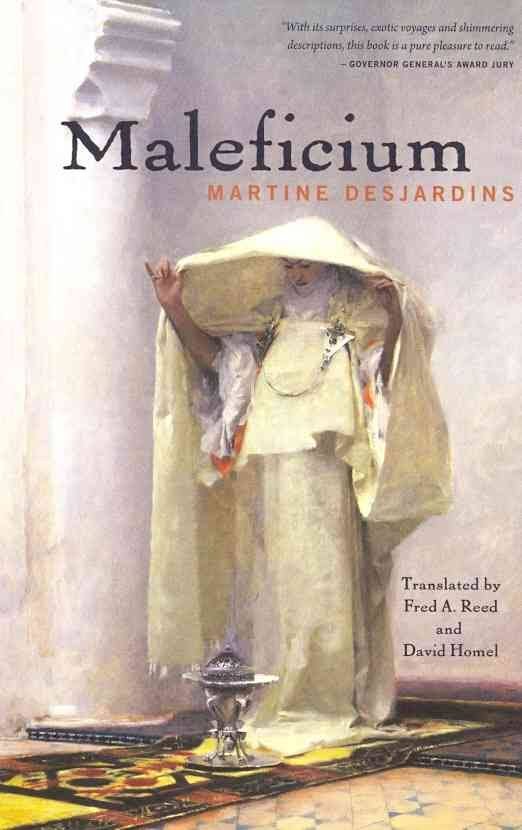
Last week I was nervously waiting at the eye doctor (nervous mainly because of the pandemic, and a woman sitting just a smidge too close, though everyone was masked if not double-masked) and reading Maleficium*, a slender novel-in-stories by Martine Desjardins (trans. Fred A. Reed and David Homel), when I came upon the chapter "Oculus Malignus," a 19th century confession from a maker of tortoiseshell eyeglasses who has recently gone blind. (*Disclosure: I am an affiliate of Bookshop.org and I will earn a commission if you click through and make a purchase.)
The speaker had traveled to Muscat in search of tortoiseshell. There, in addition to slaughtering turtles, he meets a missionary with a scar on her upper lip and "irises [...] of an acidic ocher hue." The missionary shows him her pince-nez, much finer than any tortoiseshell he'd ever seen. Greedily, he asks where she found such material, and she is happy to oblige. By staring directly into the sun, "her lachrymal glands [would secrete] a substance that solidified when exposed to sunlight, and formed scaly tears."
All of the stories are sensory-rich confessions, nearly all from greedy men who had traveled from Montreal east in search of some prized exotic material. They all come upon this mysteriously seductive woman with the scarred upper lip and some other monstrous quality. They all suffer horribly for their transgressions. As other reviewers have noted, this could be a bit repetitive, but there is a certain satisfaction in seeing the particular twist Desjardins puts on each tale. The gem-like prose, even when discussing all manner of effluvia, is a joy to read.
Here is one more example that captures the beautiful but bizarre storytelling, this time about the woman's ear:
"The circumvolutions formed a perfect helix at the tip of each lobe, and the vortex with its spirals drew me into the mysterious orifice of her ear canal. I would have liked to place my eye against it, as a keyhole; through a kind of subtle intuition, suddenly I was sure I would find the key to new architectures there."
The saffron-rich first story inspired me to make a saffron-infused gin cocktail for the virtual version of Publishing Cocktails' annual summer book swap. Last summer, when an actual book swap was possible, I gave one of my absolute favorite books, Elena Ferrante's Days of Abandonment and received Charlotte Perkins Gilman's What Diantha Did. I hope next summer it will once again be possible to actually foist a favorite on a fellow book lover.


